Marriage Ceremony (Vivaha Samskara)
This is a very elaborate ritual. In the Hindu tradition, the marriage is formalized with the couple taking their vows by the sacred fire & with seven ‘parikrama’ (circumambulation) around it. Read this article to learn about the auspicious time to conduct it, method to be followed, the science behind this ritual, etc.
This is one of the most important rituals which has been followed and celebrated throughout the ages, all over the world. ‘Vivaha’ (marriage or wedding) is the taking away of a girl in a special way or for a special purpose, i.e., to make her one’s wife. The origin of this ritual is traced to the story which speaks of how heaven and earth, that were once together, became separate and they said to each other – ‘Let us bring about a marriage, let there be cooperation between us.’ In another interpretation, the principal purpose of marriage, as per the Vedic scriptures, is the importance attached to the wife because a man depends on her to carry forward his lineage, the lineage of his ancestors. This ensures a place in heaven for the man and his ancestors. For this, the blessings and help of the religious rites are sought.
An accurate prediction about your love compatibility can be arrived at only when certain parameters are studied, for which we require the exact birth details as mentioned in the form below.
Hindu marriages also establish that the husband and wife perform sacrifices together, not separately; and that, emphatically, there can be no separation between husband and wife since they have to perform religious acts jointly in the future. Marriage, therefore, is a composite rite comprising of several subordinate elements which have to be performed in a certain order; the last of which is seeing the constellation of the seven sages. This rite establishes the status of a woman as a person’s wife.
In Hindu tradition, ‘vivaha’ is the most important samskara or ritual that marks the beginning of Grihasthashram. Of all the ‘ashramas’ (four stages of life in Hinduism), Grihasthashram has been accorded the highest status. The first stage of one’s life is spent in the teacher or Guru’s ashram, which is equivalent to gathering academic knowledge in today’s world. The second stage is spent with the wife and children; the third stage in the forest; and the fourth and last stage of life as a sanyasi (renouncer), casting away every worldly tie.
Vedic importance of Marriage
- It is only after marriage that an individual can achieve the four ‘purushartha’ (endeavors) of life, i.e., ‘dharma’ (righteousness), ‘artha’ (wealth), ‘kama’ (desire), and ‘moksha’ (liberation from the cycle of death and rebirth).
- It is believed that an individual can pay ancestral debts by having children, which is the primary reason for a marital bond.
- It is an important social institution which regulates many other aspects of life like inheritance of property, residence, social and sexual behavior, etc.
- This ritual, therefore, boosts cultural values and induces character building in a society.
Types of Marriage as per Vedic Scriptures
There are eight types of marriage mentioned in the scriptures and they are divided into two groups – desirable (‘prashasta’) and undesirable (‘aprashasta’).
Desirable Marriages
Brahma Vivaha: This is believed to be the purest form of marriage as the girl is given away by the father, with gifts and ornaments which the family can afford without any burden. The girl is married to a learned man of good character, who voluntarily and respectfully offers to get into the marriage, without taking anything in exchange. This kind of marriage is considered the most honorable as it is free from physical force, lust, imposition of conditions, and the lure of money.
Daiva Vivaha: In such marriages, the girl is ornamented and given away by the father as a sacrifice to a priest who officiates the yagna (sacred fire) organized by him. This method of giving away a daughter as a sacrifice faded as a practice in later years.
Arsha Vivaha: In this method of marriage, the father of the bride gives away the girl to the bridegroom after receiving from him a pair of cows or an ox and a cow, or two oxen - for the purpose of a yagna (ritual in front of a sacred fire). ‘Arsha’ suggests marriage with priests or sages. This method also ceased to exist as the method began to be interpreted as amounting to a sale.
Prajapatya Vivaha: This involves the father giving away his daughter to a suitor with the specific understanding that they would both perform their civic and religious duties to Prajapati (Lord of Creation and Protector) by procreating and raising children. Unlike Brahma marriage, here the bride's father goes in search of a groom, which is not considered as desirable as the groom’s parents seeking out a bride.
Undesirable Marriages
Asura Vivaha: In this marriage, a man secures a wife by offering money and wealth to the girl and her family. Such marital alliances are considered undesirable as it can be interpreted as purchasing a wife.
Gandharva Vivaha: This is what we would term as ‘love marriage’ today, where the girl and boy meet and the union is consummated in passion and love. Majority of the lawgivers discourage it on religious and moral grounds because it is performed without sacred rituals and originates in passion and love.
Rakshasa Vivaha: In this method, the girl is captured or abducted to forcibly marry a man. Such practices were common during war or political upheavals.
Paishacha Vivaha: This is the least approved in the scriptures as it involves seducing a girl in loneliness when she is asleep, intoxicated or not of sound mind.
Beliefs and sentiments about marriage rituals
- It is a union of spirits rather than two individuals.
- The couple takes sacramental vows to attain the four objectives of life: ‘dharma’ (righteousness), ‘artha’ (wealth), ‘kama’ (desire), and ‘moksha’ (liberation from the cycle of death and rebirth).
- It is an institution for the couple to satisfy their desires, to beget children, to manage their wealth and resources, and to serve society.
- Mantras (verses) are chanted to invoke Narayan in the bridegroom and Lakshmi in the bride. It is believed that the marriage ritual is the union of God and Goddess, not merely between two physical bodies.
- Both husband and wife have to make sacrifices and put in efforts to lead a desirable marital life in order to attain ‘moksha’, which is not an overnight process but more of a lifelong, sacred commitment.
- It is believed that the couple is the body consciousness of ‘I and You’, the ‘atma’ (soul). They should rise above selfish motives and desires, resolving conflicts and differences when they arise.
Muhurta for Hindu Marriage
Various factors are considered while calculating the auspicious date and time for Hindu marriages, such as — auspicious ‘nakshatra’ (constellation), ‘vaar’ (solar day), ‘yoga’ (special combinations and positions of planets with respect to houses and other planets), ‘karana’ (when the Moon moves its position by 6 degrees to the Sun), ‘tithi’ (lunar day), and the selection of favorable Ascendant.
When can marriages be conducted?
Marriages can be conducted when the Sun transits Aries, Taurus, Gemini, Scorpio, Capricorn, and Aquarius. Marriages should be avoided when the Sun transits other signs.
When should marriages be avoided?
- Adhik Maas: The additional month added to a year, once in about three years, to align the lunar and solar calendars.
- Kshaya Maas: A certain month dropped from the lunar calendar, which happens over a cycle of centuries.
- Chatur Maas: A period of four months consisting of Shravan, Bhadrapada, Ashwin, and Kartik, when Lord Vishnu supposedly goes to sleep.
- Pitru Paksha: A period of 16 lunar days when Hindus pay homage to ancestors.
- Holashtak: The 8-day period before Holi.
- When Venus and Jupiter are set or combust.
Procedure for Marriage Ceremony
As per the scriptures, a Hindu marriage ceremony is conducted in the following manner:
- Haldi Ceremony: On the day before the wedding, a creamy paste of turmeric (‘haldi’) and oil is smeared over the bride’s body. This detoxifies and cleanses the skin. Lord Ganesha is worshipped at the bride’s home as a mark of auspiciousness.
- Welcoming the Bridegroom (Var Agamana): The bridegroom is welcomed at the entrance of the bride’s house or marriage hall. The bride and the bridegroom place garlands over each other and a vow is recited, ‘In following my duty, in our financial matters, in fulfilling my physical thirst, I will always consult you, take your consent and act upon it.’
- Offering Honey (Madhuparka): The bride welcomes the bridegroom and gives him honey, yogurt and ghee, suggesting that she will always please him with the sweetness of her behaviour. There is also a bitterness in the mixture which symbolizes the bitterness that life can sometimes bring.
- Accepting the Bride (Panigrahan): The parents of the bride proffer her hand to the bridegroom and request him to accept their daughter as his wife. The bridegroom takes hold of her hand as an acceptance of the bride as his wife and presents her with clothing and jewelry.
- Invoking the Sacred Fire (Vivaha Yagna): The sacred fire is invoked, where Lord Vishnu is believed to serve as a divine witness, and offerings are made to it.
- Stepping on the Stone (Shilarohan): The bride places her right foot on a stone; while the bridegroom tells her to be as strong as the stone in his house so they can face all challenges and problems together, with ease.
- Laja Yagna (Offerings to the Sacred Fire): Four offerings are made to the sacred fire. The brother of the bride places parched riced / puffed rice into the bride’s hands, half of which is meant to fall into the bridegroom’s hands. Mantras are chanted. The bride prays to Yama, the God of Death, to grant a long life, health, happiness, and prosperity to the bridegroom.
- Saptapadi (Seven Steps): The bride and the bridegroom take seven steps around the sacred fire, representing the Fire God (Agni Dev) who is taken as a witness to the marriage. The couple pledge the following seven vows:
The First Vow: The groom says, ‘Om esha ekapadi bhava iti prathaman’ (I will provide you happiness and resources and, in return, ask you to offer me food and necessities to manage the family). The bride says, ‘Dhanam dhanyam pade vadet’ (I am responsible to take care of the household, food and other welfare of the family). They both promise to bring prosperity in their lives.
The Second Vow: The groom says, ‘Om oorje jara dastayaha’ (Together we will protect our house and children); and the bride says, ‘Kutumburn rakshayishyammi sa aravindharam’ (I will stand with you as your strength and courage in all circumstances). It is a union of the partners on physical, emotional, mental, and spiritual levels to protect each other through all phases of life.
The Third Vow: The groom says, ‘Om rayas santu joradastayaha’ (I assure to give you a wealthy and prosperous life); and the bride says, ‘Tava bhakti as vadedvachacha’ (I will be loyal towards you). It shows the loyalty in their relationship along with the promise of a prosperous and secured life.
The Fourth Vow: The groom says, ‘Om mayo bhavyas jaradastaya ha’ declaring to the bride that she has fulfilled his life and promises to respect her. The bride says, ‘Lalayami cha pade vadet’ (I promise to shower happiness and joy in your life). The couple express their gratitude and promise to become responsible parents to their children.
The Fifth Vow: The groom says, ‘Om prajabhyaha santu jaradastayaha’ (You are my best friend and I request God to bless you). The bride says, ‘Arte arba sapade vadet’ (Your happiness and sorrow are my happiness and sorrow, will honor you and strive to fulfill your wishes).
The Sixth Vow: The groom says, ‘Rutubhyah shat padi bhava’ (Now that you have taken six steps with me and I am delighted, would you promise to fill my heart with the same happiness for lifetime?). The bride replies, ‘Yajna hom shashthe vacho vadet’ (I promise to be with you throughout your life). This vow tells one of the importance of health, peace and prosperity in one’s life.
The Seventh Vow: The groom says, ‘Om sakhi jaradastayahga’ (We are now husband and wife, and now we will stay together for eternity). Bride replies, ‘Attramshe sakshino vadet pade’ (With God being the witness, I am your wife, and both will cherish and honor each other forever).
- Circumambulation around the Sacred Fire (Agni Parikrama): The bride and the bridegroom move around the sacred fire four times. On the first three rounds, the bride leads the bridegroom and on the fourth round, the bridegroom leads the bride. Before each round, an offering is made.
This part of the ceremony is also known as ‘Phera’. - Blessing the Bride (Saubhagya Chinha): The bridegroom blesses the bride by putting vermillion powder (‘kumkum’ or ‘sindur’) at the parting of her hair or on her forehead and by giving her a ‘mangalsutra’ (sacred thread).
- Greeting the Sun (Surya Darshan): The bridegroom accepts the bride as his wife in the presence of the Sun deity. If the marriage is performed at night, he tells her to look at the Dhruva star (star of steadiness) and at the star of Arundhati (star of devotion). The bridegroom tells her to be firm in her love and duty, and to be devoted to him like Arundhati was to Sage Vasishta. The bride reiterates that she will remain devoted like Arundhati.
- Touching the Heart (Hriday Sparsh): The bridegroom and bride pray that may their heart be united, may they live together in concord. They tell each other, ‘I touch thy heart unto mine.’
- Feeding the Bridegroom (Annaprashan): The bride feeds the bridegroom and tells him, ‘By feeding you this sweet food I shall bind thy heart with the thread of truth and sincerity and love. My heart will be thine and thy heart will be mine forever.’ Traditionally, she feeds him ‘kansar’ that is made of wheat flour, sugar or powdered jaggery and ghee.
- Completion of Ceremony (Purnahuti): After the final offering is made to the sacred fire, the priest blesses the bride and bridegroom. Flower petals and rice are distributed to the guests, who shower them on the bride and the bridegroom. The bride and groom are now integrated to share their lives in every way.
Science behind Hindu wedding rituals
Mehandi Ceremony: It is one of the most important rituals in Hindu weddings. Mehandi is created from the henna plant and besides cosmetic appeal, it has medicinal properties. It helps in soothing the nerves from stress and anxiety.
Haldi (Turmeric) Ceremony: A turmeric paste is applied to the bride and groom, which gives a natural glow and has disinfection properties.
Yagna Kund (Holy Fire): It renders the environment disease free as the yagna ingredients have medicinal properties to remove bacteria and to enhance immunity.
Sindoor (Vermilion Paste or Powder): Applying sindoor on the forehead of the bride, which is a concoction of turmeric and metal mercury powder, helps to de-stress the body and activate the sexual hormones. That is why widows are prohibited from applying sindoor.
Mangalsutra (Auspicious Thread): Wearing the mangalsutra by the bride is symbolic of wearing a sacred thread that unites her soul with that of her husband.
Toe Ring: The bride is made to wear a ring on the second toe since the nerve from that toe is connected to the uterus and passes through the heart, involved in the dynamics for regulating the menstrual cycle and keeping the reproductive organ healthy.
Bangles: The bride is made to wear bangles; the friction between the skin and the bangles helps to improve blood circulation.
Bindi (Dot on the Forehead): The spot where the bindi is placed on the forehead is where major nerves of the body meet and applying slight pressure on this spot can help relieve stress.
.jpg)



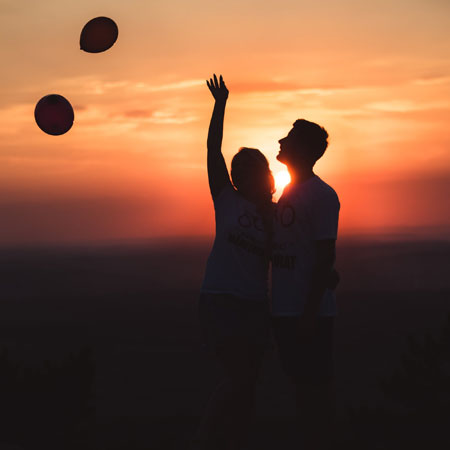
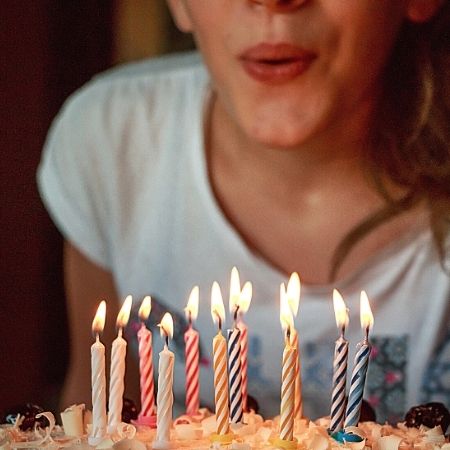


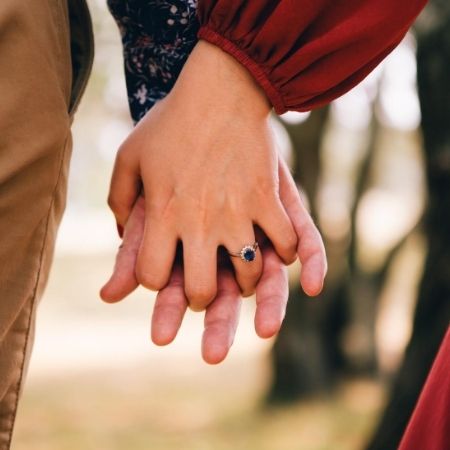
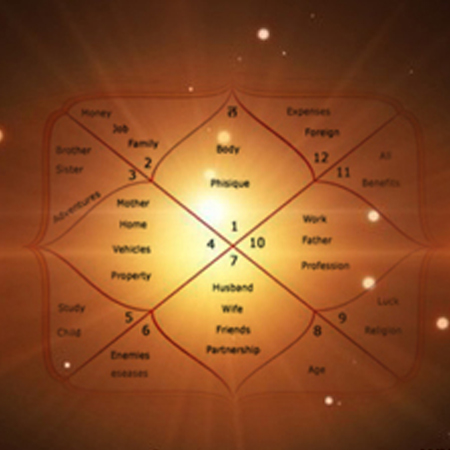

 Who Is Your Ideal Match In Love?
Who Is Your Ideal Match In Love?
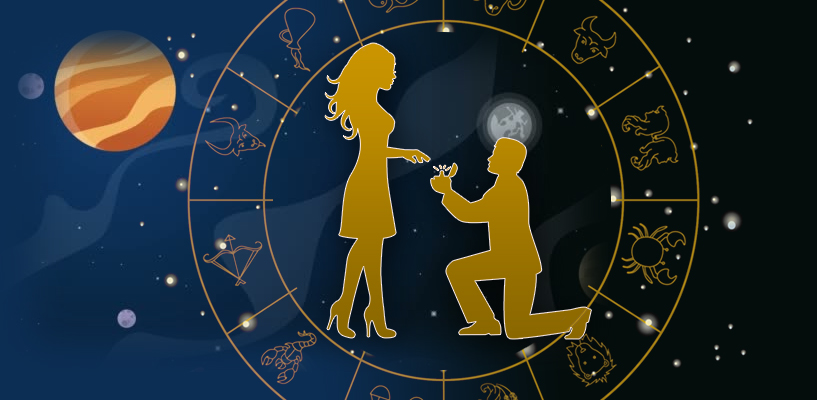 The Secret To Astrology Compatibility For Relationship Is Revealed
The Secret To Astrology Compatibility For Relationship Is Revealed
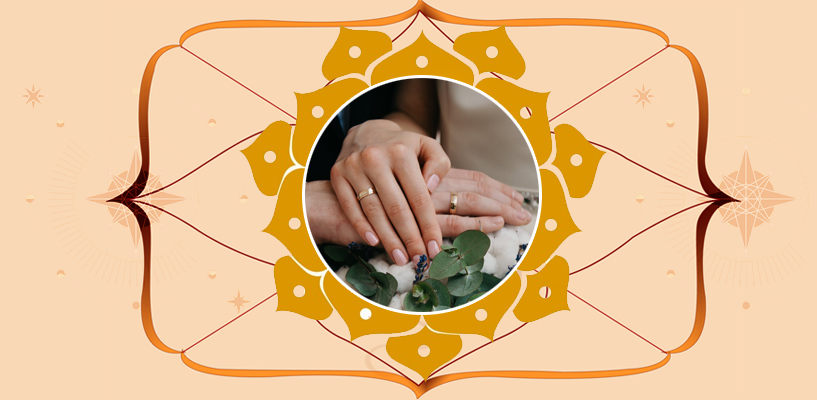 Kundali Matching & Marriage
Kundali Matching & Marriage
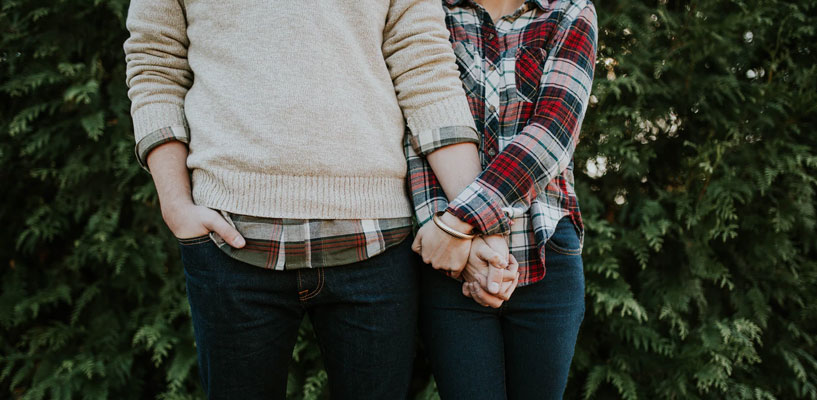 Signs That Someone Is In Love With You
Signs That Someone Is In Love With You
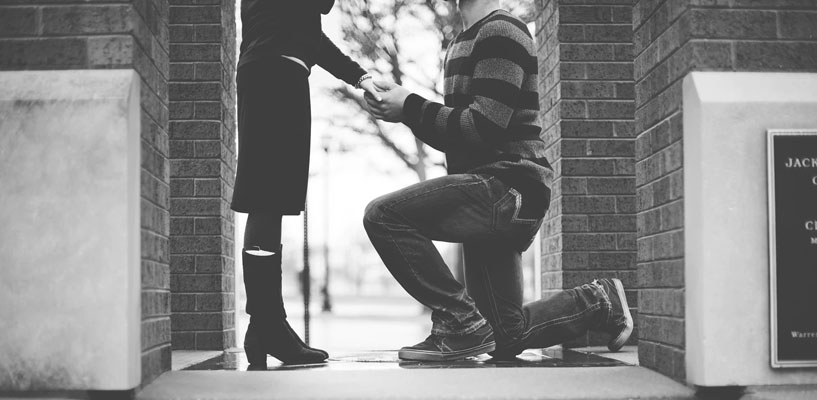 How to get your crush to like you?
How to get your crush to like you?
